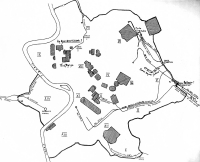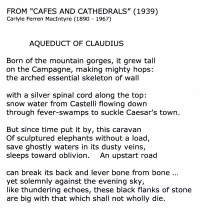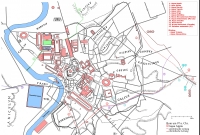


| Home / the complete website |
| For details of the seperate aqueducts, see the relevant chapters in the left column |
 |
 |
 |
|
| Aqueduct | Date of construction | Volume m3 per day | Total length (km) | Length on arches (km) | # Cas tellae | I PC | II Cm | III I+S | IV TP | V Esq | VI AS | VII VL | VIII FR | IX CF | X Pal | XI CM | XII PP | XIII Av | XIV Tt |
|---|---|---|---|---|---|---|---|---|---|---|---|---|---|---|---|---|---|---|---|
| Appia | 312 bc | 75.000 | 16 | 0.1 | 20 | - | x | - | - | - | - | - | x | x | - | x | x | x | x |
| Anio Vetus | 272 bc | 180.000 | 81 | 0 | 35 | x | - | x | x | x | x | x | x | x | - | - | x | - | x |
| Marcia | 144 bc | 190.000 | 91 | 10 | 51 | x | - | x | x | x | x | x | x | x | x | - | - | (x) | x |
| Tepula | 125 bc | 18.000 | 18 | 9 | 14 | - | - | - | x | x | x | x | - | - | - | - | - | - | - |
| Julia | 33 bc | 48.000 | 22 | 10 | 17 | - | (x) | x | - | x | x | - | x | - | x | - | x | - | - |
| Virgo | 22 bc | 100.000 | 21 | 1.2 | 18 | - | - | - | - | - | - | x | - | x | - | - | - | - | x |
| Alsietina | 2 bc | 16.000 | 33 | 0.5 | -- | - | - | - | - | - | - | - | - | - | - | - | - | - | (-) |
| Claudia | 38 ad | 185.000 | 69 | 14 | 92)* | - | x | - | - | - | - | - | - | - | x | - | - | x | x |
| Anio Novus | 38 ad | 190.000 | 87 | 11 | 92)* | x | - | x | x | x | x | x | x | x | - | x | x | - | - |
| Traiana | 109 ad | - | 55 | - | ? | ? | ? | ? | ? | ? | ? | ? | ? | ? | ? | ? | ? | ? | ? |
| Alexandrina | 226 ad | - | 22 | 2.4 | ? | ? | ? | ? | ? | ? | ? | ? | ? | ? | ? | ? | ? | ? | ? |
Regiones in ancient (and modern) Rome:
| I | PC | Porta Capena | VI | AS | Alta Semita | XI | CM | Circus Maximus |
| II | Cm | Caelimontium | VII | VL | Via Lata | XII | PP | Piscina Publica |
| III | I+S | Isis et Serapis | VIII | FR | Forum Romanum | XIII | Av | Aventinus |
| IV | TP | Templum Pacis | IX | CF | Circus Flaminius | XIV | Tt | Transtiberim |
| V | Esq | Esquiliae | X | Pal | Palatium |
| Recommended literature : | Guide to the Aqueducts of Ancient Rome, P.J. Aicher (1995) |
| Recommended website : | www.waterhistory.org |
| How to visit : | See book of P.J. Aicher above |
| HOME | More literature on more aqueducts | Last modified: December, 2018 - Wilke D. Schram (W.D. Schram 'at'romanaqueducts.info) |